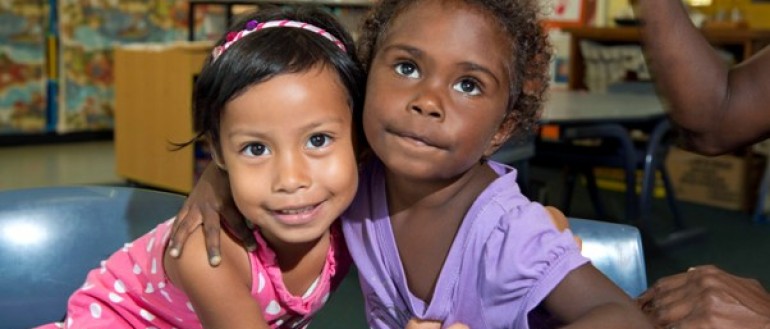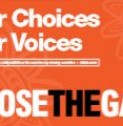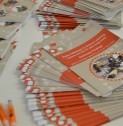Worldwide, pregnant women and children have the highest rates of anaemia. In the Northern Territory (NT), 15% of pregnant women and up to 25% of children aged 0-5 years are anaemic.
Anaemia is associated with adverse effects on physical and cognitive development in the early years and reducing potential for educational attainment and employment in later years.
The National Child Health Care Report (2012-2013) and the Trends over Time: Key Indicator of Priority Evidence-Practice Gaps in Child Health (2007-2013) indicate that the best practice guidelines for anaemia screening, treatment and follow-up are poorly implemented and have not improved over time.
Our research focus:
- To conduct quantitative and qualitative studies to determine community member and health practitioner anaemia knowledge, barriers to the implementation and uptake of best practice guidelines and acceptability and quality of new and existing data collection tools.
Our research impact:
- Community members had a good knowledge of childhood anaemia including the causes, symptoms and treatments, with diet as the main focus for preventative and curative measures.
- Health practitioners had a varied level of knowledge about anaemia which in general was reflective of the position they held in the health service.
- Barriers to the implementation and uptake of anaemia best practice guidelines were multifactorial and included: anaemia knowledge and use of electronic health records. Further exploration with health practitioners and community members is required to determine how often they believe iron rich foods should be consumed and what the barriers are to accessing these foods.
- The use of cameras and video recording devices was an acceptable dietary collection tool to use with young children. The data completeness and quality improved when used in conjunction with a written transcript and discussion with the care giver.
- Community members and health practitioners were comfortable discussing anaemia knowledge in focus groups or individual interviews.
Key staff:
- Thérèse Kearns
- Selma Liberato
- Felicity Ward
- Leanne Bundhula Dhurrkay
- Roslyn Gundjirryirr
- George Gurruwiwi
- Stefanie Puszka
Collaborators:
-
Miwatj Health Aboriginal Corporation
Current projects:
- Childhood Anaemia – Knowledge and Resource Development Project
- Building capacity to evaluate and monitor dietary intake at remote communities
- Anaemia Evaluation
Past projects:
- Kearns, T., Ward, F., Puszka, S., Gundjirryirr, R., Moss, B. & Bailie, R. (2017). Anaemia Health Literacy of Community Members and Health Practitioners Knowledge of Best Practice Guidelines in a Remote Australian Aboriginal Community. Universal Journal of Public Health, 5(1):32-9. doi: 10.13189/ujph.2017.050105.
- Liberato, S.C., Kearns, T., Ward, F. & Brimblecombe, J. (2016). Use of electronic visual recording to aid assessment of dietary intake of Australian Aboriginal children living in remote communities? Aust NZ J Public Health, 40(s1), s27-s29. Online.
- Kearns, T., Liberato, S. & Ward, F. (2014). Childhood Anaemia – Knowledge and Resource Development Project Report. Menzies School of Health Research.
-
There are 3 new Closing the Gap education targets: here's what they miss
At Menzies and CDU we have been looking at what happens to Indigenous students in the NT as they move through school.
-
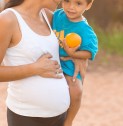
Media release | Impact of maternal anaemia in pregnancy on childhood anaemia discovered
A study investigating the impact of maternal anaemia in pregnancy on infant anaemia has found it to be a more significant risk factor than being born premature or low birth weight (LBW).
-
Lowitja Institute Report | Anaemia Prevention Program, Katherine East
An Anaemia Prevention Program has been running in three communities serviced by Sunrise Health in East Katherine region in the Northern Territory (NT)
-
Understanding how NT Aboriginal school attendance could be improved
Regular attendance at preschool in remote Northern Territory communities will improve a child
-
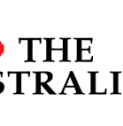
The Australian | Attendance at pre-school key to literacy, numeracy
A study of more than 60,000 children born in the Northern Territory since 1994 has found that boosting remote preschool attendance could increase their chances of meeting Year 3 minimum standards for writing and numeracy by up to 70 per cent.
-

Boosting Early Learning For Indigenous Children
Dr D’Aprano, a paediatrician who works with children with developmental difficulties, first noticed the disparity while on sabbatical in the Northern Territory.
-

NT communities' anaemia management evaluated
Evaluation of anaemia management in three remote Indigenous communities in the Katherine East region, NT Health practitioners in the remote Katherine East region are not sure why anaemia in young children is so common in Indigenous communities. What they...
-

Rapid iron infusion trial to tackle widespread deficiency among children in Australia’s Northern Territory
Foodnavigator-asia.com: A project in Australia’s Northern Territory is to trial giving anaemic children rapid iron infusions before they are discharged from hospital in an attempt to reduce the risk of ongoing iron deficiency.
-

Menzies secures 2016 NHMRC funding for groundbreaking projects
Innovation and transformation are at the heart of the Menzies School of Health Research (Menzies) projects which have secured funding in the highly competitive NHMRC grant round.
-
Health workers upskilled to help close the gap
Queensland Minister for Health and Ambulance Services Cameron Dick announced Menzies School of Health Research had been awarded $2.25 million over three years to deliver the Aboriginal and Torres Strait Islander Brief Intervention Training Program.

